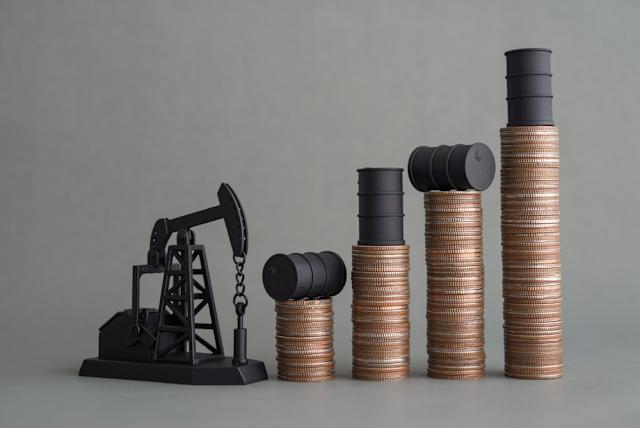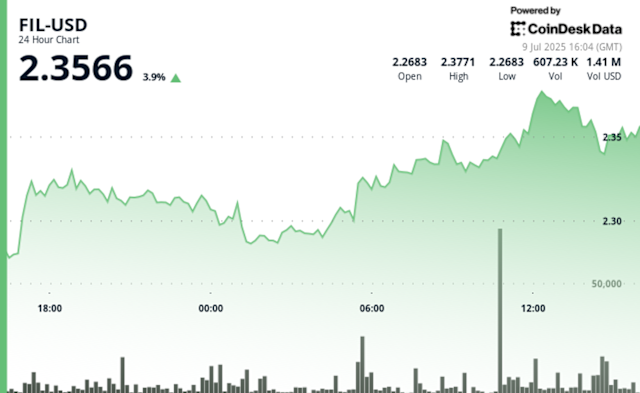
Regardless of unpredictable wars, natural disasters and OPEC+ decisions, the oil and gas sector knows how to adapt. Energy banking expert Mari Salazar of BOK Financial said the industry has integrated these challenges into pricing models.
Companies are now seeing cleaner balance sheets and resilience to price volatility. This allows banks to continue deploying capital creatively, Salazar said.
Banks are shifting strategies to adapt to the current market by supporting existing clients and focusing on smaller M&A, particularly for non-operated assets.
The key driver, Salazar said, is an increased focus on hedging, largely by equity providers. Companies in for the long haul aim to protect those investments and get that capital back to their investors.
Salazar details BOK's investment strategy at Hart Energy’s Energy Capital Conference with Oil and Gas Investor’s Deon Daugherty.
Hi, I am Deon Daugherty, editor-in-chief of Oil and Gas Investor here in Houston at the Energy Capital Conference, and today we have Mari Salazar, senior vice president and director for energy banking at BOK Financial. She was just on stage addressing huge topics of the day and now we have the chance to kind of hit home on some of those points that she was raising. So Mari, thank you for being with us.
Mari Salazar, senior vice president and director for energy banking, BOK Financial: Thank you for having me.
DD: Excellent perspective as always. We kind of want to look at several factors affecting the market. We've got tariffs, wars, OPEC + increasing production. The perception is that things are really tough right now. Is it as bad as it seems and in this environment, can banks that are hungry to deploy capital can they do so?
MS: Yeah, so you have hit on all the big ones. I think you can always toss in wildfires in Canada as well, but those things, even though it seems like it creates a lot of volatility, what you've seen recently is prices have actually ticked up. And I think a lot of it is our industry has already sort of built those things into the price. We're used to war, we're used to sort of natural disasters. We're used to some of these global things that impact our industry all the time. Our companies right now have really clean balance sheets. For the most part, they are well capitalized. If you look back at 2018 and 2019, you had companies that were four times leveraged. Now you have companies that are sub one times leveraged. So these changes, these adjustments in pricing really don't impact them in the same way.
Story ContinuesDD: So banks that do want to deploy capital, where do you see that happening? Will it be an upstream sort of supporting production? What's the plan as far as banks further engaging?
MS: So what we've seen is we've been able to continue to support our existing clients. So when we're looking at increases in credit facilities, you'll see banks as a whole take larger hold positions. We have been able to really work with a smaller producer who has seen an active M&A market on smaller transactions, things that potentially non-op or if they're looking to maybe buy acreage and maybe only have 10 or 15 wells. We've been able to see some movement there. As you see consolidation, yes, banks are getting paid down or maybe aren't able to upsize in a credit facility they're already in, but there are different ways to deploy that capital. And it is either finding creative ways, as one of our speakers on the panels mentioned, it's doing non ops, finding different structures that makes sense for our clients, taking larger hold positions. There's always a way to deploy capital when we need to.
DD: Okay. And then as you mentioned, the industry, especially the upstream side, is in a much better position financially maybe than at any other time in its history, with the low leverage. Total fiscal discipline, returning cash to shareholders. In a volatile market, how long can they sustain those practices do you think?
MS: If you go back and look over the last couple of years, what we've seen is a real shift in our industry. One, we don't have the same number of banks that we used to. So you really have a true group of banks that are committed to the industry, but it's not 50, 60, 70 banks, right? It's a core group of banks that still look at specific credit metrics. If you go back and you had equity firms that potentially flipped their company in two to three years, you made sure you had a good management team. Now you need to make sure that that management team is a good operator because the company is not going to be around for one or two or three years. It's going to be around for three, four, five years. So that investment is longer. So from our equity partners, what you've seen is a lot more focused on hedging.
If you look at our credit structures, ours are a little bit more malleable. It depends on how much you are funded on your credit facility. If you're going to borrow more debt than we want you to be hedged more. But it's really the equity provider that is driving that hedging discussion, right? They're trying to protect that long-term return. So what you see is more discipline, I think, from the equity provider to make sure that they're able to raise their next fund, and their next fund, and their next fund by making sure that those investments are protected and they're able to get that capital back to their investors.
DD: And I think hedging is a really important topic.
MS: Yes.
DD: By and large, is the upstream space as well-hedged as you would've hoped, facing $50, $60 oil.
MS: It is strategically hedged, I'll put it that way. In that I think they are more creative on “do we want to give up our upsides? If we don't, then maybe we layer on puts.” How do you structure those puts? Maybe you do deferred premium puts, right? And you layer them on and you pay for those puts over time. If you're not really funded under your credit facility, then do you need to be hedged out 18 to 24 months, three years? It doesn't really make sense if you think prices are pretty volatile.
So maybe let's hedge 18 months, 50% of our production and then we're able to sort of ride out that and then we layer in hedges. So what we see more often is a lower tenor on the hedges, we see a lower percentage, but there are rolling requirements, right? So you'll see that client hedging on an 18-month basis, on a 12-month basis, on really an ongoing basis to always protect their working capital and any of their capex programs that they have scheduled. So they're really being more tactical and strategic in how they're layering on their hedges specifically to address what their capital needs are and capital program is.
DD: It sounds a lot more complicated in a volatile market than it is when things are pretty stable.
All right, Mari, thank you so much for that perspective. Absolutely. Really appreciate it and thank you for joining us. We hope to see you again soon.














